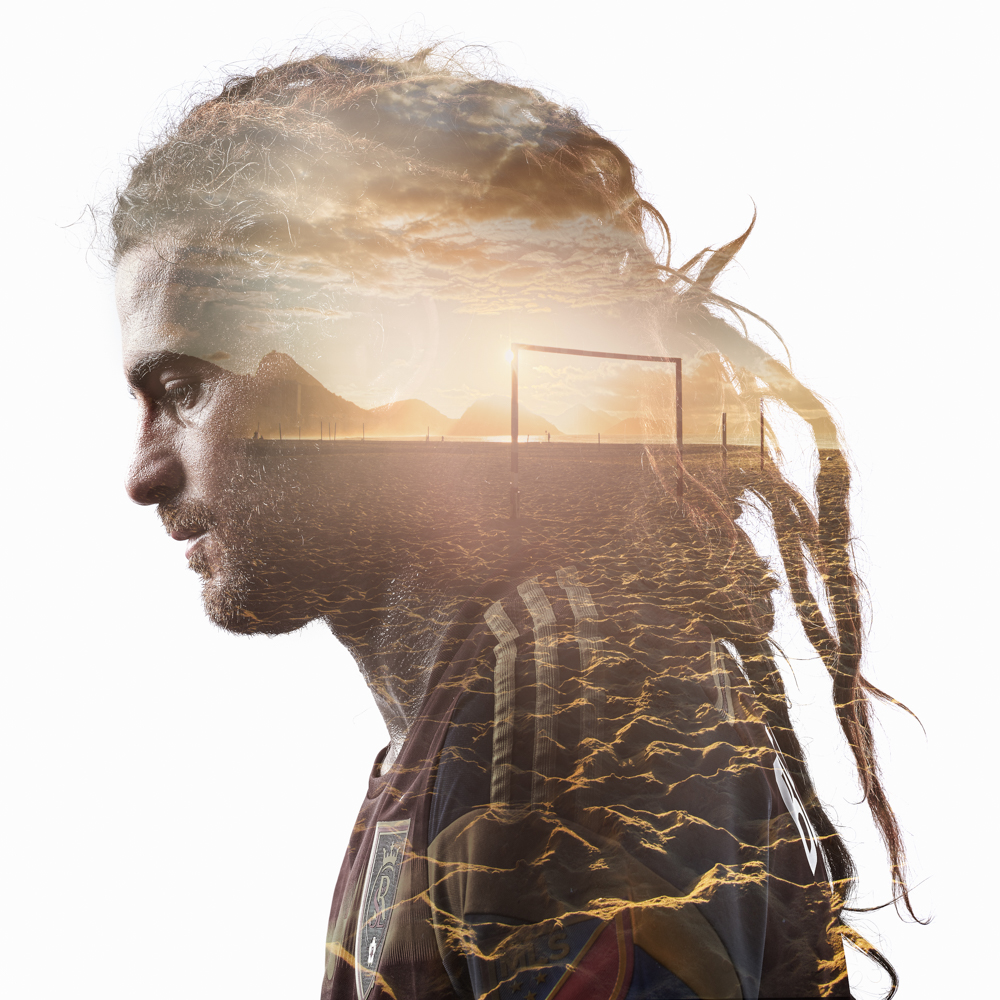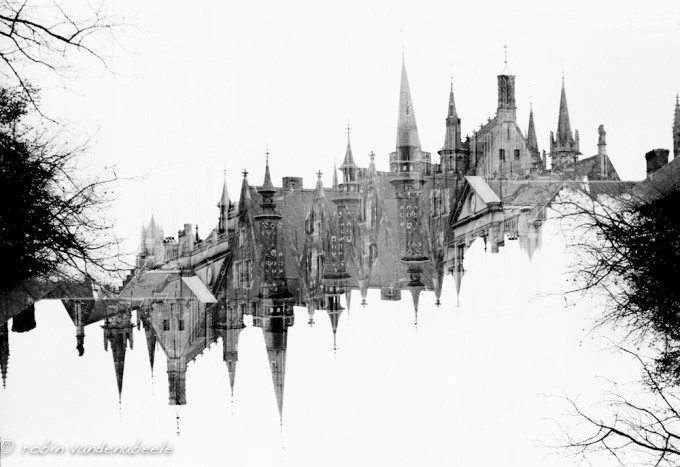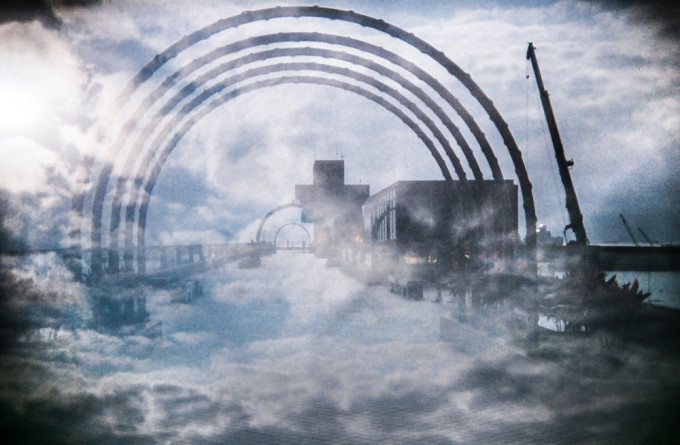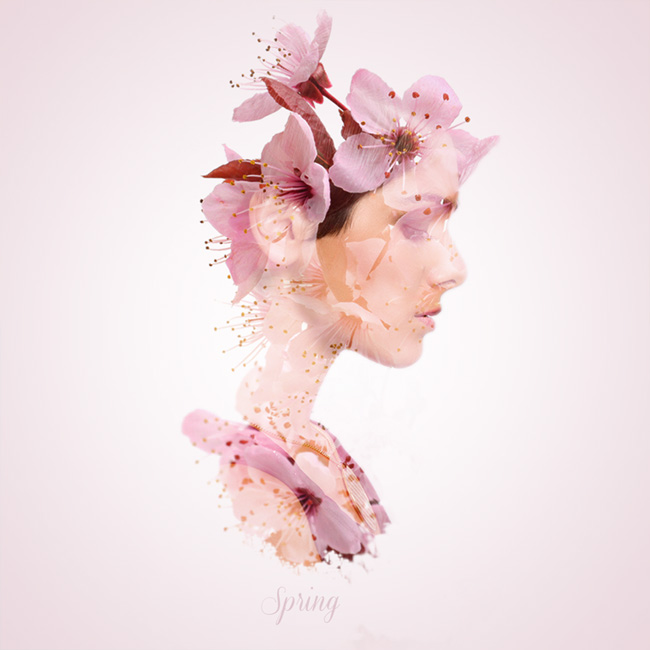Last Updated on 08/17/2015 by Chris Gampat

All images used with permission from their original owners.
Double exposures are tough to do, but if you keep trying and are perseverant, you can eventually create very beautiful scenes in camera. But double exposures aren’t just about the technicalities. They also need to be great concepts. And even if you don’t create them all in-camera, a bad double exposure can still be a bad double exposure.
To get you inspired, there are a number of photographers that we’ve interviewed creating incredible double exposure images along with some tips that they offer.
Tim Tadder
According to Tim, his double exposures of Major League Soccer athletes weren’t done in-camera. But he said that it’s all about the concept. He states:
“Good story telling concepts make the doubles effective. Putting two images together is nothing without a clear visualization of how the two images marry together. These are very clear as to what we are communicating. Effective images are great communicators of concept. So for doubles to work they have to be more than eye candy.”
More in our interview.
Brandon Kidwell
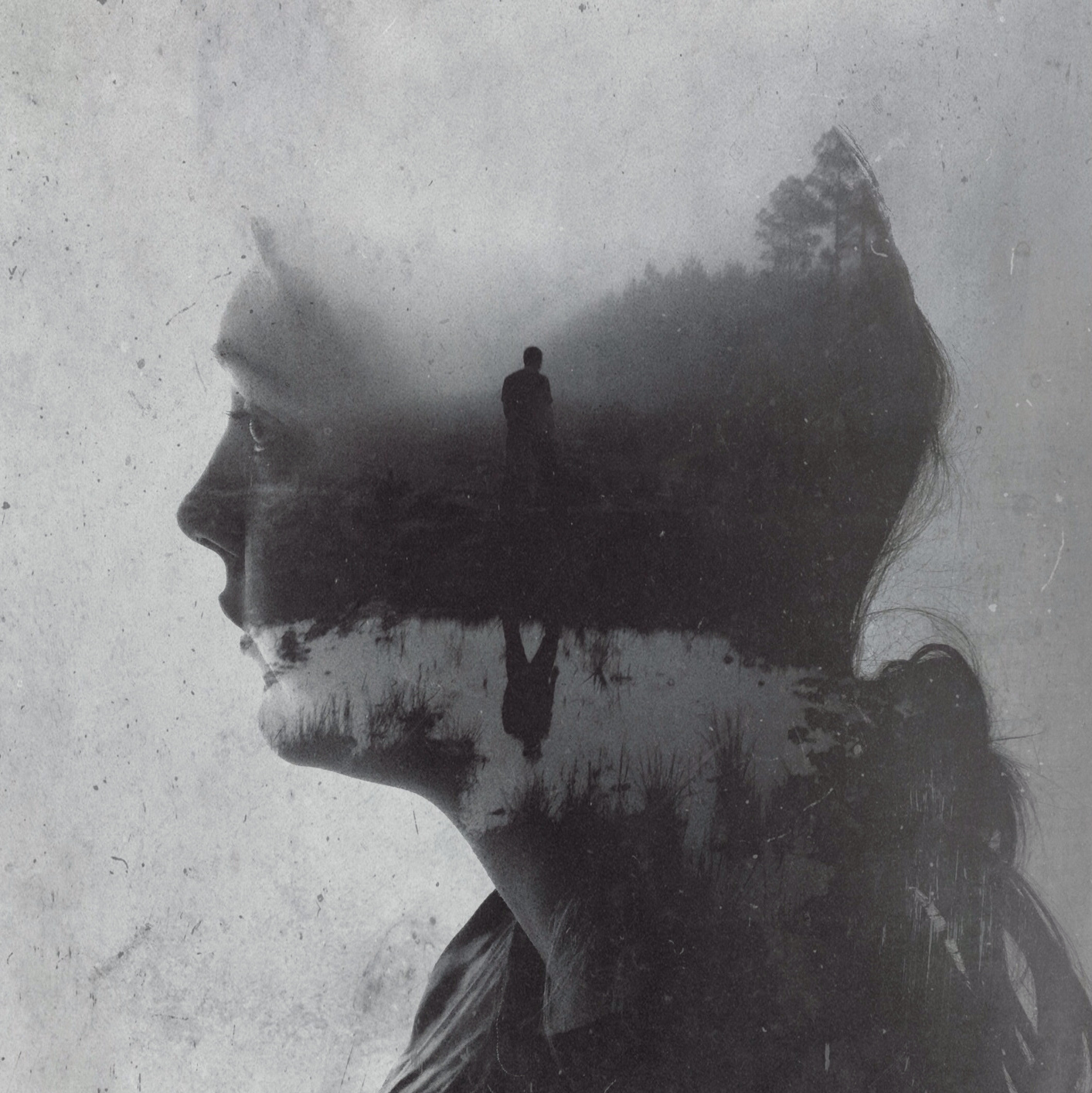
Photographer Brandon Kidwell’s project is called “Wisdom for my Children” and he created the series of images that relate to something that each of his children were going through at the time of shooting the series.
He says that inspiration has to come to you:
“I always let it come to me, it’s everywhere if you’re open to it you just have to be patient. If you go looking impatiently for something that’s right in front of you’ll most likely look right past it.”
Find out more in our interview.
Robin Vandenabeele
Photographer Robin Vandenabeele as some of the more aesthetically pleasing and interesting photos on this list as his images take specific shapes that tend to randomize.
And trust us, this is tougher than it seems. He explains:
“Double exposures can be really tricky if you don’t have a basic knowledge of how film or an image sensor works. Basically you have to imagine a black canvas on which you paint with (colored) light. It is as if you would erase the black bit by bit by applying light in different intensities and colors until you are left with only white. But instead of using brushes you would be using your composition which is made up of geometrical spaces with varying intensities. To make successful double exposures you need to be able to visualize what overlapping intensities will do. Very simply put where dark spaces overlap the resulting part of the image will also be dark, but where light and dark overlap, the light will erase according to its intensity. Where light and light overlap it will be light on the resulting double exposure. So in order to visualize the end result you really have to know what makes your image, the light or the dark parts. Making a double exposure solely out of greys can be really hard to read I find.”
Read more about him in our interview.
Hayden Williams
When Hayden Williams shared his analog film double exposures with us, we were incredibly impressed. This type of stuff is tough enough to do in digital, but it’s even tougher when it comes to film. So to spark his creativity, he stopped doing double exposures in digital and went to film. He said that doing them in Photoshop felt cheap to him.
“I started combining images in Photoshop and was pretty pleased with the results. But it felt cheap; all this Photoshop didn’t feel like photography anymore. I saw a few accidental double exposures with film on Flickr and decided I’d do it intentionally. I found a Canon AE-1 for $25 at some thrift shop and started experimenting. After my first few rolls I was hooked. The dream worlds you can create with such simple equipment amazes me every time. It’s a fun way to test your creativity, and a great way to create something uniquely beautiful.”
Read more about him in our interview.
Tom Krieger

Photographer Tom Krieger uses his iPhone to create double exposures, and his work gained fame during last year’s EyeEm awards.
According to our blog post on him:
“It is this simplicity to focus on the essentials of the image design. And I love to play around with apps,” Tom said. He explains his process as working with apps like Diana. After this he scrolls through his other images on his phone to combine with the one he just show. Then he plays around with apps until he gets exactly what he wants from the image.”
Read more about him in our interview.
Alon Avissar
Photographer Alon Avissar is the mastermind behind a series of photos that are inspired by the seasons. It started as a hobby and creating portraits of his friends and family, but it eventually became even larger.
He tells us:
“With it being the dead of winter and having been snowed in for the past couple days now, I starting thinking about what designs I could create based on the theme of “seasons.” Alphonse Mucha’s Art Nouveau calendars immediately came to mind. These calendars would be split in to four sections and always featured a pretty girl representing her own stylized seasonal wonderland. I figured I’d attempt give this same concept an updated double exposure twist.”
Check out more in our interview.


